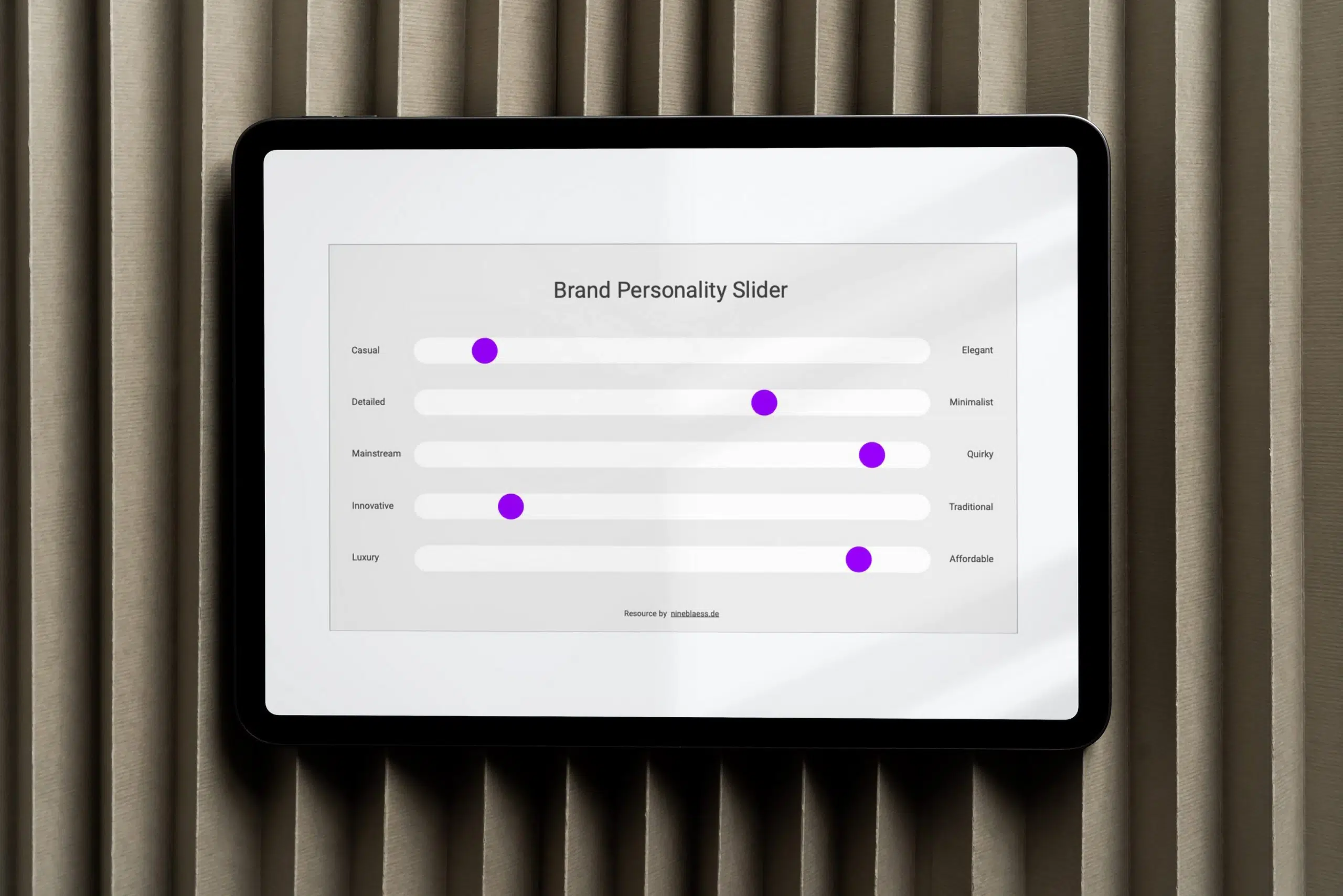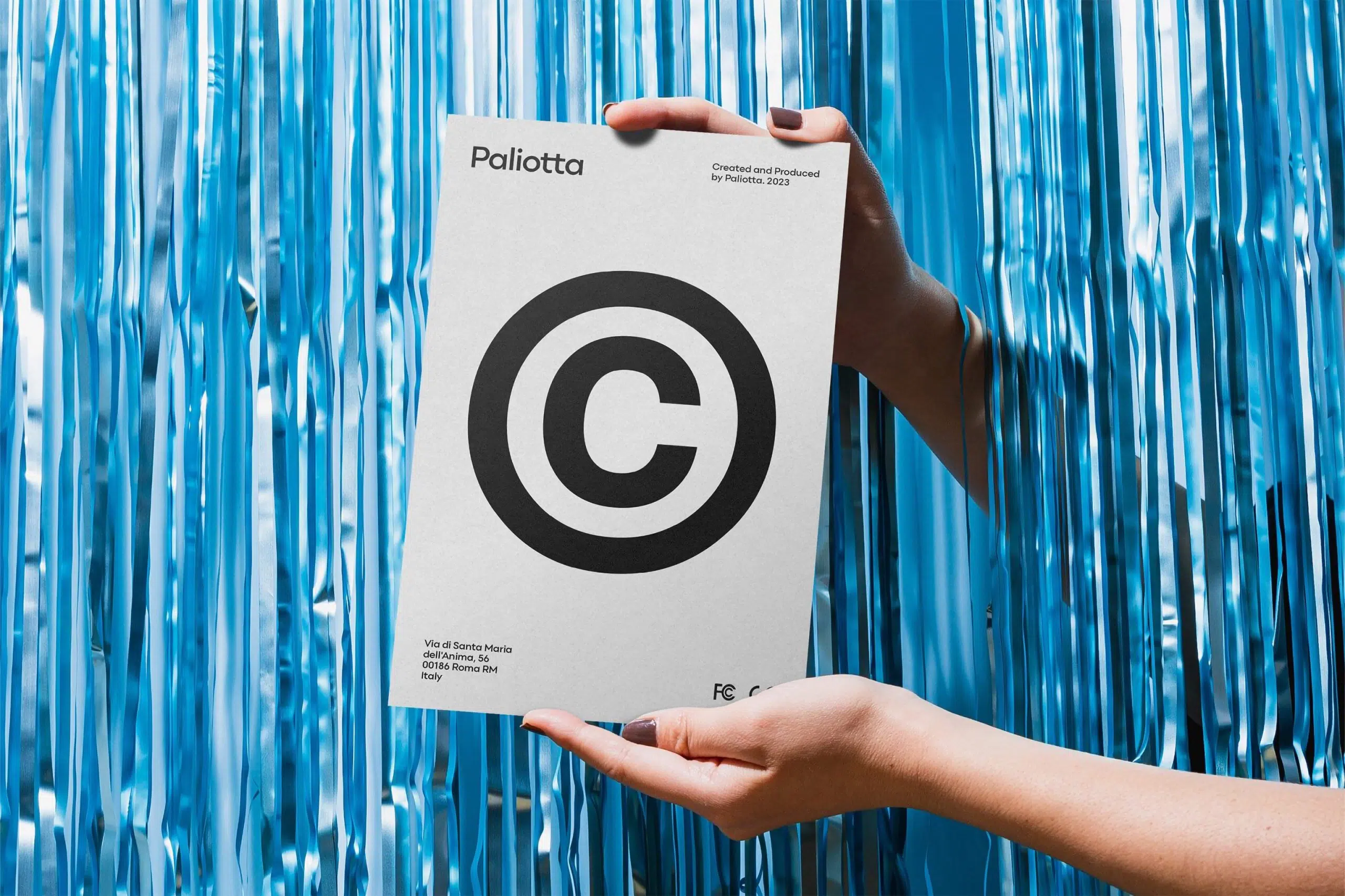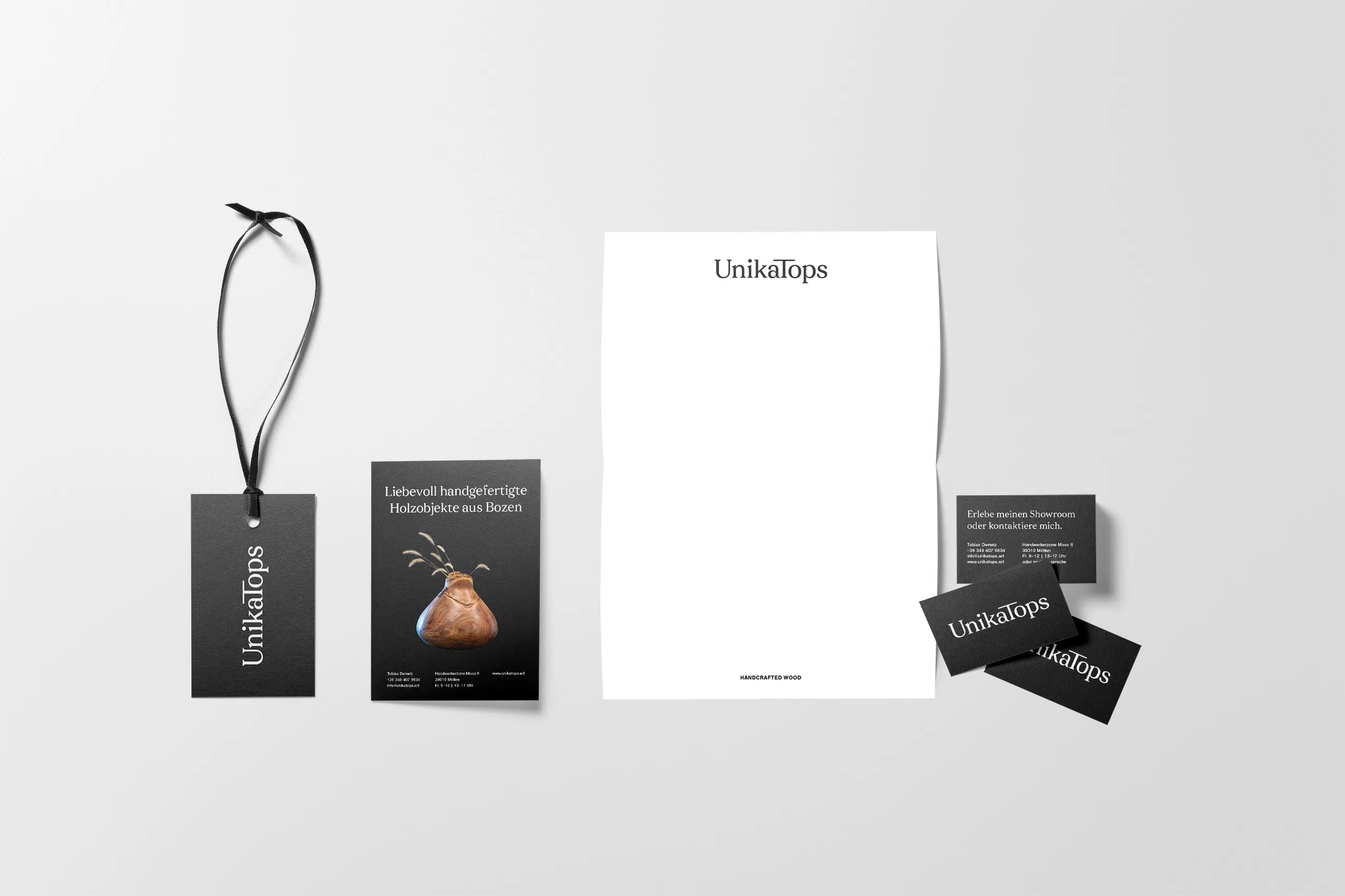In this article, you will find 18 brand positioning examples and effective brand placement strategies.
But before we dive in, let’s clarify what brand positioning is.
What is brand positioning?
Your brand positioning determines how your brand is perceived by your target audience in relation to the competition.
In other words, your brand positioning gives people a compelling reason to choose your brand over another.
What is a brand positioning strategy?
Your brand positioning strategy is the conscious effort to create a clear image of your brand in people’s minds.
It involves defining the key features, benefits and values that characterise your brand and offering.
It also involves analysing the preferences, perceptions and behaviours of your target audience, as well as studying your competitors and identifying potential gaps in the market.
Market research is a helpful tool in this process.
So, your ideal brand positioning should be tailored to your brand, stand out from the competition and appeal to your audience.
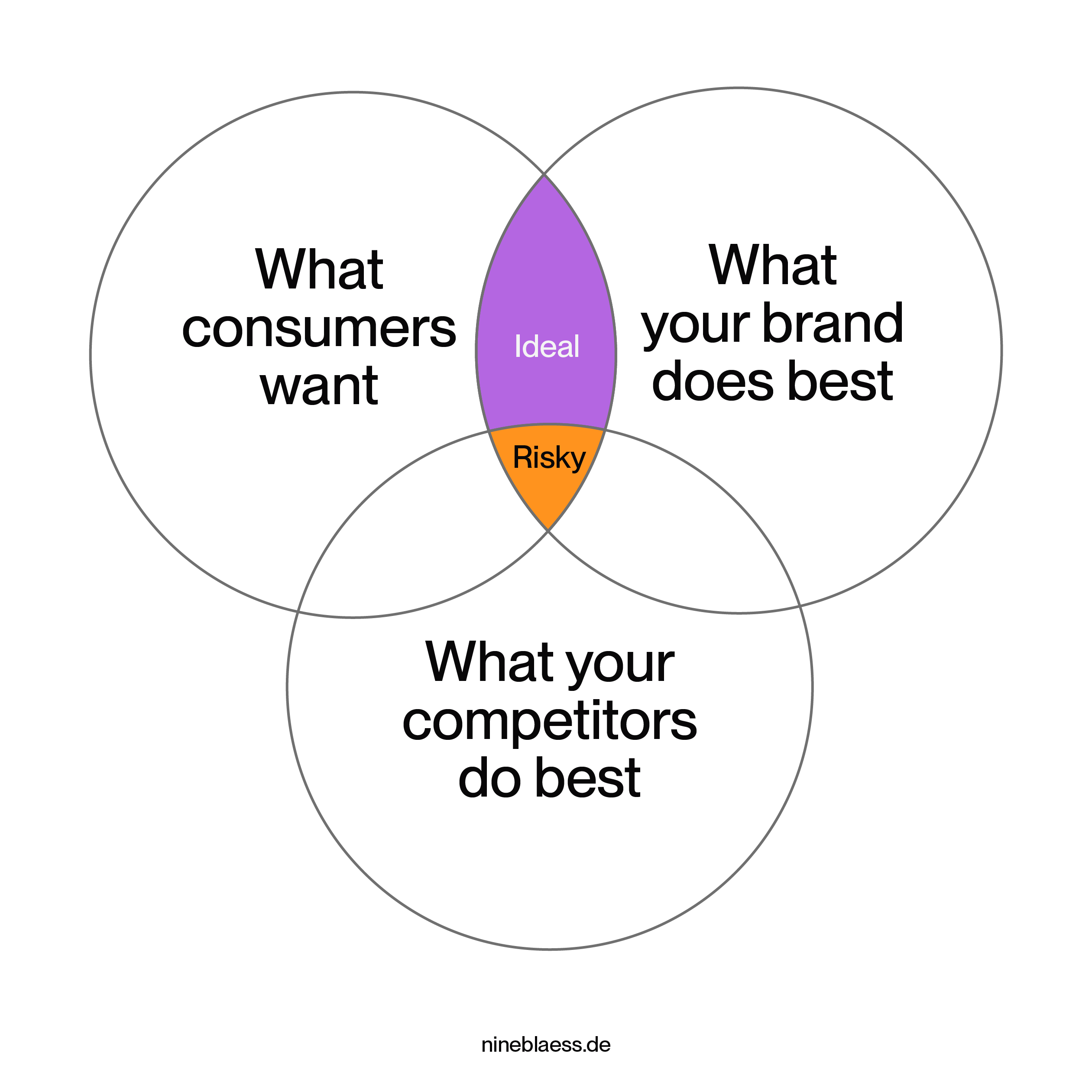
Your brand positioning strategy should also act as a plan to consistently communicate your brand message across different brand touchpoints, such as your verbal and visual identity, or customer interactions.
The ultimate goal of your brand positioning strategy is to create a consistent, memorable and differentiated identity for your brand.
Why is brand positioning so important?
Millions of new companies are founded every year. The chances of survival are often slim.
In the US alone, a staggering 5.5 million new business applications were filed in 2023. Approximately 2.5 million (45%) of these businesses will fail in the first five years, and only about 1.4 million (25%) of them will still be around after 15 years.
How do you ensure your brand not only survives, but thrives?
The answer may lie in your brand positioning.
Your brand positioning is the foundation for all your corporate communications. It ensures that your messages are consistent, clear and relevant to your target audience.
In addition, a distinct positioning allows you to communicate the benefits of your brand effectively.
This allows you to differentiate your brand and add genuine value. Over time, this helps to build trust and loyalty and increases your customers’ willingness to pay higher prices.
Key elements of a brand positioning strategy
Typically, a brand positioning strategy includes the following:
Target audience research
Identify specific demographic, psychographic and other relevant characteristics of your target audience.
When you understand your audience deeply and know them in detail, you can tailor your messages, products and services directly to them.
Further reading
This article will explain why it’s important to identify your target audience.
Competitive analysis
Understand the strengths and weaknesses of your competitors in the market. This analysis will help you identify opportunities for differentiation.
Unique selling proposition (USP)
Define what sets the brand apart from these competitors.
What is it you can offer that no one else can? This could be a unique feature, benefit, or value proposition that resonates with your audience.
Brand promise
Articulate the promise or commitment your brand makes to its customers. This promise should be irresistible and reflect your brand’s values and mission.
Brand Personality
Define the personality traits and characteristics that make up your brand’s identity. A relatable brand personality helps humanise your brand and create an emotional connection with people.
Brand positioning statement
Develop a brief statement that summarises your brand’s position in the market. This statement should communicate who the brand is, what it offers, and why it’s unique.
Here is a template you can use to write your brand positioning statement:
For [target audience], [brand] is the [category] that [unique selling proposition] by [points of differentiation], offering [key benefits] unlike [competitors] so that [target audience] can [desired outcome].
And here’s how this could sound like for, let’s say, HelloFresh:
For busy families, HelloFresh is a meal kit delivery service that provides fresh, pre-portioned ingredients and easy-to-follow recipes, making home cooking simple and enjoyable, unlike traditional shopping, so that families can enjoy delicious meals together without the stress of meal planning.
Although the above elements are common to brand positioning, different brands may emphasise different aspects depending on their goals, target audience and industry.
Some may focus more on differentiation and value, while others may prioritise their unique brand personality.
Ultimately, each brand needs to identify its strengths and priorities to align its positioning with its objectives.
18 different types and real-life examples of brand positioning strategies
There are many creative and original ways to approach brand positioning.
Here are a few brand positioning examples to get you inspired. But remember that most brands incorporate several factors into their positioning strategy, so many examples may overlap with other categories.
1. Creating a unique brand personality
Creating a unique brand personality helps you stand out from the crowd. By expressing your brand’s character in a way that resonates with your audience, you can build an authentic, memorable identity.
For example, if all your competitors use a formal tone, why not do the opposite and adopt a friendly, approachable personality?
But there are, of course, other nuances to a brand personality than just being formal or friendly. Let’s look at some examples.
Example: Oatly
Oatly’s playful and irreverent brand personality challenges the traditional norms of the dairy industry.
With its bold and rebellious persona, Oatly appeals to forward-thinking consumers looking for alternatives to dairy milk.
Here’s an example:
Example: Liquid Death
Liquid Death is another brand that builds its positioning on its unique brand personality.
The company simply sells canned water but has managed to captivate millions. Liquid Death has successfully differentiated itself from traditional bottled water brands by embodying the rebellious punk culture and taking an ironic stance against the beverage industry.
The brand’s unusual marketing campaigns and packaging appeal to a youthful target group seeking to break free from the mundane.
2. Solving an unmet customer need
Another approach to brand positioning is to identify an unmet need in the market and position your brand as the ultimate solution.
Example: IKEA
When Ingvar Kamprad founded IKEA in the 1940s, he saw a need for affordable, high-quality furniture. This realisation led to the invention of flat-packed furniture and self-assembly in 1953.
As a result, IKEA reduced its production, transportation and assembly costs and positioned itself as an affordable alternative to expensive designer furniture.

3. Living by your values
A 2023 global trend report by Ipsos reveals that most people believe companies can make a profit while supporting good causes. In fact, 63% of consumers would pay more for brands that demonstrate social responsibility.
These numbers show how values can affect what we buy. So, building your brand positioning around core values is a smart strategy.
Example: Dove
The ‘Real Beauty’ campaign has successfully positioned Dove as an advocate for authentic beauty and self-acceptance.
By challenging conventional beauty ideals, Dove promotes a culture of inclusion and diversity, challenging the entire advertising industry.
Here is an example:
4. Pioneering through product innovation
Innovation in product development gives brands another opportunity to occupy a unique market position.
By offering fresh solutions to people’s needs, brands can carve out a unique market position and appeal to those seeking innovation.
Example: Coca-Cola
In 1886, Coca-Cola revolutionised the beverage industry by introducing the first cola drink. Thanks to its unique and refreshing taste, Coca-Cola became a pioneer and market leader.
5. Highlighting unique product benefits
While creating entirely new products or categories may be challenging, brands can also stand out by focusing on the unique benefits their products or services offer.
Example: Dyson
An example is Dyson, whose vacuum cleaners stand out for their innovative technology and design.
Dyson consistently emphasises its features, such as strong suction power and advanced filtration systems.
By highlighting these features, Dyson positions itself as an industry leader and appeals to customers looking for high-performing products.
6. Building emotional connections
Even if your company cannot offer functional benefits, it may be able to create emotional benefits.
Emotional value refers to the intangible rewards or feelings people experience when using your product or service.
Example: Disney
Disney positions itself as the “Happiest Place on Earth.”
The entertainment company is known for the joy and wonder it brings—be it through the magic of its fairy tales or childhood memories.
7. Leveraging distribution channels
Positioning a brand via its distribution channel strategy can be another strategic move to stand out.
One model gaining increasing traction is the direct-to-consumer (D2C) approach.
By selling directly to consumers, brands can offer competitive prices and keep total control over the customer experience.
Example: YT Industries
If you’re a mountain biker like me, you’re probably familiar with YT Industries.
Thanks to its direct-to-consumer (D2C) strategy, the company bypasses traditional retail channels, lowering overhead costs and allowing YT to offer high-quality bikes at competitive prices.
YT offers a seamless shopping experience through its user-friendly website—from browsing to purchase to delivery.
This approach has made YT one of the top mountain bike brands, even in an already saturated market.
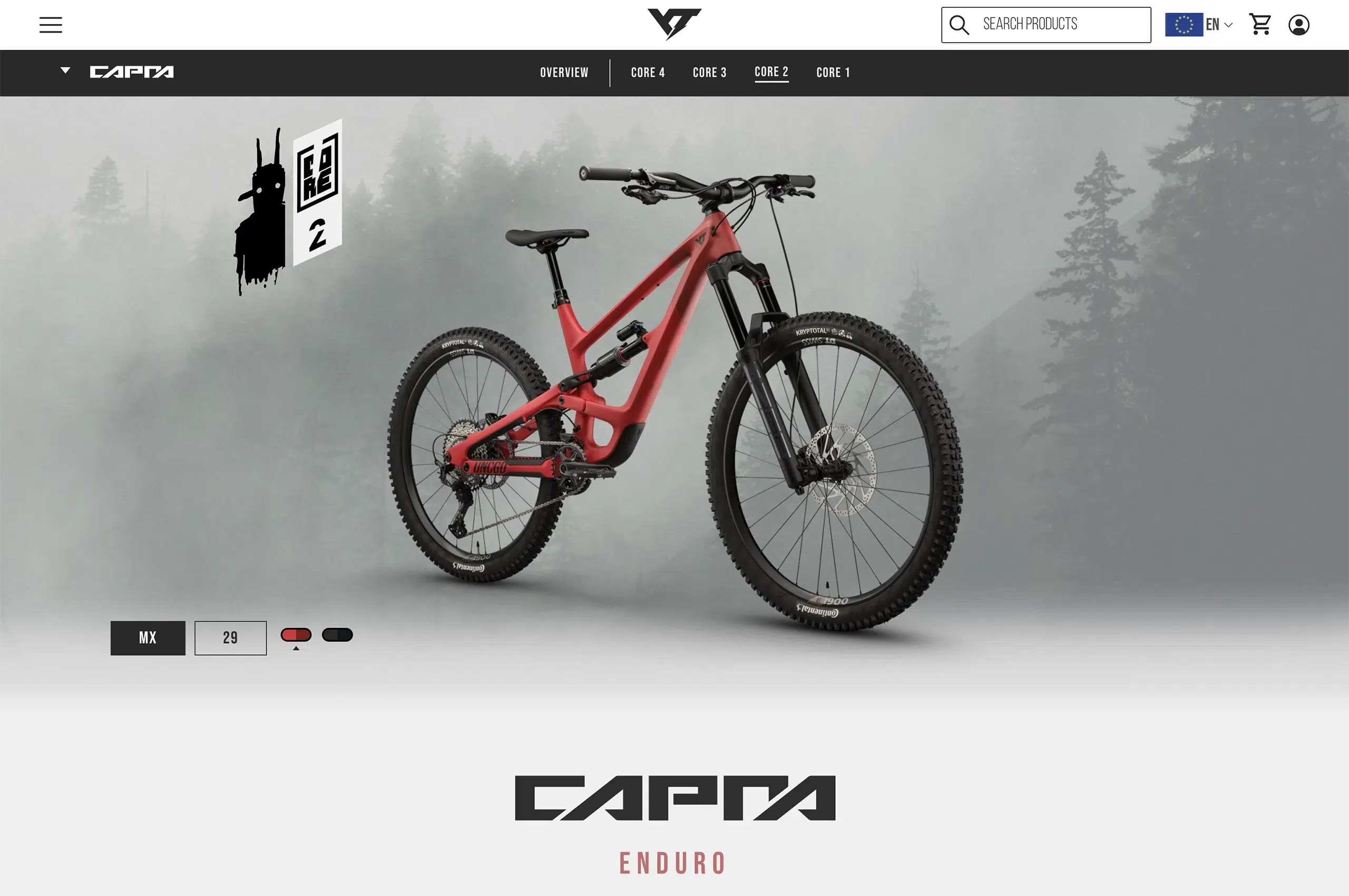
8. Strategising your pricing
Price is another way to position your brand. Your pricing will influence the perception of your brand’s quality and value.
Depending on the market and your brand strategy, you could position your brand as ‘the premium option,’ ‘the affordable option,’ or something in between.
Further reading
You may also like my article on pricing and brand perception in this context.
Example: Louis Vuitton
Louis Vuitton strategically positions itself as a premium luxury brand. Charging high prices reflects the exclusivity and superior craftsmanship the brand offers.
This way, Louis Vuitton appeals to affluent buyers pursuing status and prestige.
Example: Aldi
In contrast, Aldi pursues a value-based pricing strategy and positions itself as a budget-friendly option in the food retail sector.
By offering premium products at lower prices, Aldi attracts price-conscious shoppers who want to maximize their budget without compromising quality.
Here is a commercial from Aldi US:
9. Targeting a very specific audience
Identifying your target audience is the key to defining your brand’s positioning. Remember, you can’t please everyone.
The more detailed you know your target audience—their age, interests and lifestyle—the better you can tailor your message and products to resonate with them.
Some brands develop their positioning strategy mainly around their audiences.
Example: Lululemon
The yoga brand Lululemon appeals to active, health-conscious individuals who appreciate an urban style.
Lululemon sells these customers not just leggings but a lifestyle. The brand wants to make its customers feel special by offering yoga classes, events and rituals.
Lululemon’s focus is always on holistic well-being, as this advertisement shows:
Example: Folx Health
I want to give you another example: Folx Health is aimed at a very narrow and specific audience: the LGBTQ+ community.
The brand offers telehealth services, including hormone replacement therapy and sexual health. There is a particular focus on inclusivity, accessibility and sensitivity to the specific needs of LGBTQ+ people.
10. Leveraging a geographic location
Sometimes, what makes a brand stand out is as simple as its location.
Example: Maranui Café
The Maranui Café is a local example from my home town of choic—Wellington, New Zealand.
Although the café offers dishes similar to the many other cafés in town, there is always a long queue. That’s because Maranui is located right on the beach and offers the best sea view in the city.
11. Turning weaknesses into strengths
This strategy is undoubtedly one of my favourites.
I admire brands that turn a perceived disadvantage or challenge into a unique advantage. Recognising and addressing their weaknesses is a great way to build people’s trust and credibility.
Example: Guinness
Guinness, the iconic Irish stout beer, has made a name for taking longer to pour.
The brand’s famous slogan, “Good things come to those who wait,” acknowledges the longer wait required for the perfect pint. Rather than communicating this as a disadvantage, Guinness sells it as proof of the beer’s quality.
Here is one of the brand’s most famous ads:
Example: Avis
In the 1960s, Avis found itself only the second choice after Hertz, the market leader for rental cars. Because the brand couldn’t identify any obvious benefits, Avis launched its famous “We Try Harder” campaign.
With slogans such as “Avis can’t afford dirty ashtrays” or “Avis can’t afford not to be nice,” the brand communicated its commitment to client satisfaction.
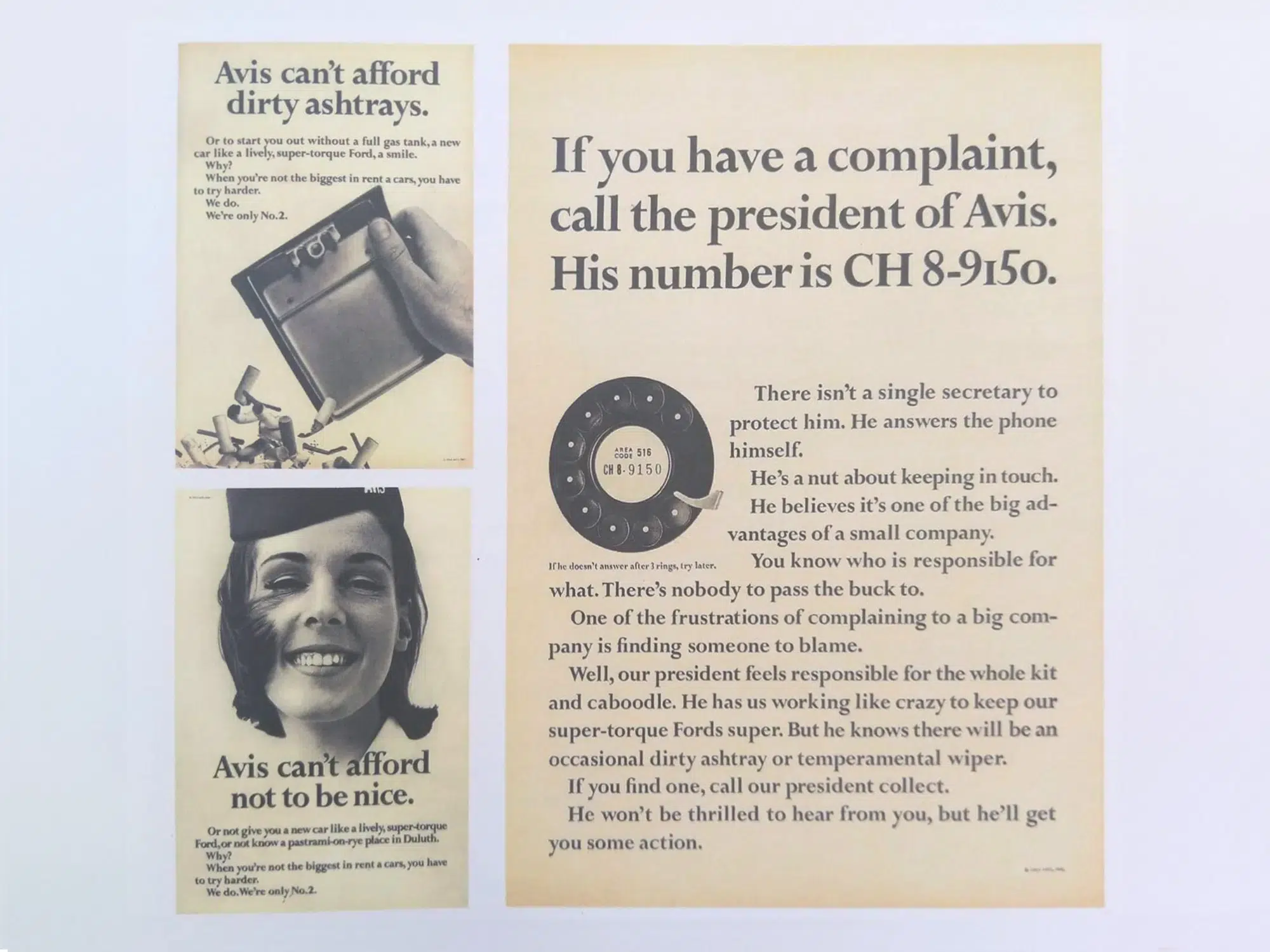
12. Focusing on quality
Earlier, we discussed how price and perceived quality often go hand in hand when it comes to brand positioning. But let’s look at quality again as a separate strategy.
Example: Arc’teryx
Arc’teryx is known for its high-quality outdoor clothing and equipment.
The brand combines technical innovation, quality and performance in extreme environments, appealing to serious outdoor enthusiasts who value functionality and durability.
Of course, the equipment is expensive, but what are 700 dollars for a jacket that will last a lifetime?
This video shows how serious the brand takes the development of the perfect gear:
13. Improving the user experience
If your brand doesn’t fit into the strategies discussed so far, there’s another option: Why not create a seamless and beautiful user experience?
Example: Apple Retail Stores
Apple has wholly transformed retail with its Apple Stores.
From the sleek, minimalist design to the attentive staff—every element of the Apple Store has been carefully orchestrated to create an experience.
Visitors can test the latest products, participate in workshops and events or get individual advice. And there isn’t even a conventional checkout.
Example: Spotify
Let me give you another example, this time for a digital brand.
Spotify grants users access to extensive music, podcasts, and other audio content libraries.
Thanks to its intuitive user interface, personalised recommendations, and other features like cross-device syncing, users can access their favourite music anytime, anywhere.
13. Delivering exceptional customer service
Your customer service can be another differentiator. Excellent support can leave a lasting impression and build and maintain long-term relationships.
Example: Zappos
Zappos is known for going the extra mile for its customers.
Do you know the famous story?
A woman once called to cancel an order because her husband, whom the order was for, had passed away. In response, a Zappos customer service representative handled the cancellation and sent her a flower bouquet to express their condolences.
14. Offering convenience
For some brands, convenience is at the heart of their positioning.
Brands that offer seamless and efficient solutions for everyday needs can gain a competitive advantage in our fast-moving world.
Example: Uber
Uber has radically transformed the taxi industry by creating a convenient way to book a ride with just a few clicks on your smartphone.
With its user-friendly app, Uber makes getting from A to B easier than ever. After all, who calls a cab these days?
Here’s a fun ad from the brand:
15. Leveraging personalisation
Some brands position themselves as “The personalised option.”
They differentiate themselves from their competitors by individualising their services or products, making them more relevant to each customer.
Example: Netflix
Netflix is an example of this. The streaming service uses algorithms to determine the behaviour and preferences of its users.
This way, Netflix can give people individual recommendations for films and TV shows. Netflix keeps its audience engaged by compiling content based on each user’s usage history, ratings, and preferences.
Example: Prose
I want to give you another example of how personalisation is possible with physical products, too—even on a larger scale. Prose offers personalised hair and skin care products.
New customers complete a questionnaire and receive products tailored to their hair or skin type and individual requirements.
16. Establishing thought leadership
Another way to position your brand is through its thought leadership.
Thought leadership involves establishing your brand as a trusted authority within its industry by sharing your expertise and innovative ideas.
Example: HubSpot
HubSpot, a leading provider of inbound marketing and sales software, has positioned itself as a thought leader in the digital marketing industry.
HubSpot provides marketers with valuable insights, trends and best practices through its blogs, eBooks, webinars and reports.
Here’s a great video HubSpot created on brand positioning. It shows what type of content HubSpot provides:
17. Building on brand heritage
Some brands derive their positioning strategy from their long-standing tradition and cultural heritage.
Example: Levi’s
Levi’s is an example of a brand that relies on tradition in its positioning. Their iconic jeans have been worn for generations.
Levi’s emphasises its heritage, rooted in American culture and history, in its vintage-inspired designs, advertising campaigns and collaborations with artists and musicians.
The fact that Levi’s employs a historian speaks for itself.
18. Embracing craftsmanship
Lastly, some brands focus on attention to detail and outstanding craftsmanship.
Example: Rolex
Rolex positions itself as a leading brand in the watch segment by stressing its craftsmanship.
The precise craft that goes into every Rolex watch shows in the attention to detail and high product quality.
Here is a short video demonstrating this:
Last words
I hope you found these examples of brand positioning inspiring.
As you can see, brand positioning is about occupying a specific place in people’s minds.
By identifying niches in the market or perception and successfully occupying them, you can differentiate your brand and build a strong bond with your customers.
But remember, brand positioning is an ongoing task. As the market evolves and consumer preferences change, your brand positioning may need to adapt to stay relevant and competitive.
That’s why you should continuously monitor and manage the perception of your brand. Gather feedback, track market sentiment, and make adjustments to maintain a positive and unique brand image.
Let’s finish with a statistic: consistently positioned brands generate, on average, 10-20% more revenue. That’s a convincing reason to take a closer look at your brand positioning.
As part of my brand strategy work, I help businesses with their positioning strategies. If you want to learn more about my approach, please get in touch with me.
Title image by Vlada Karpovich











